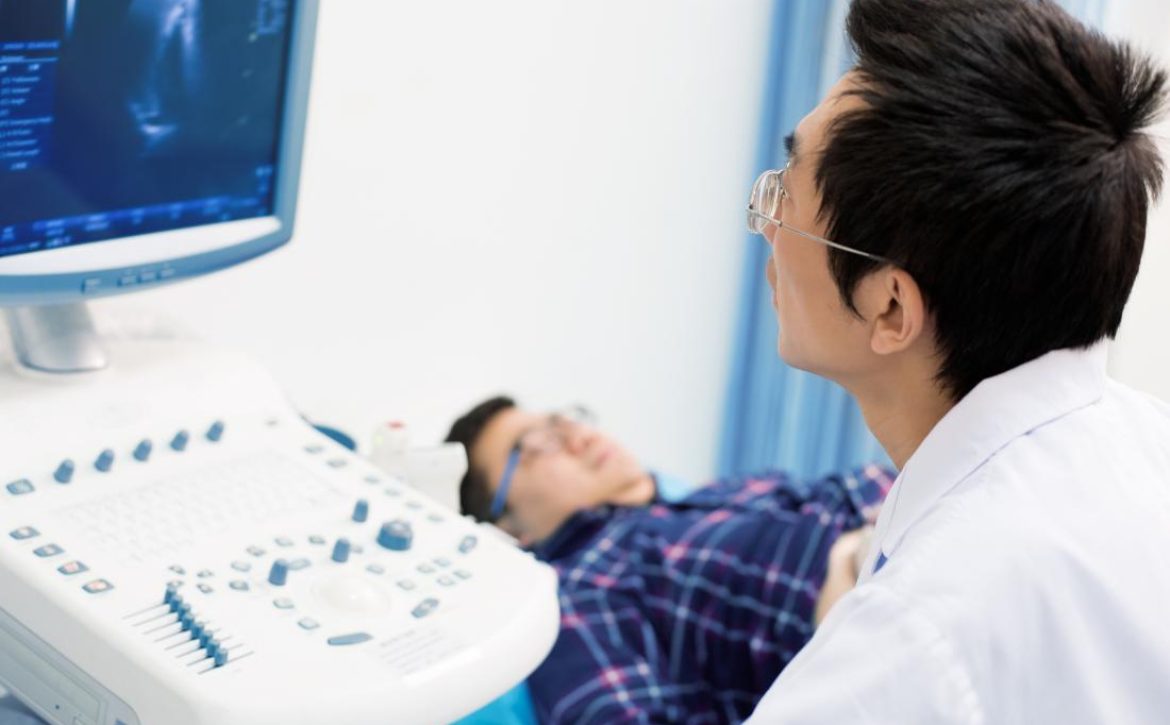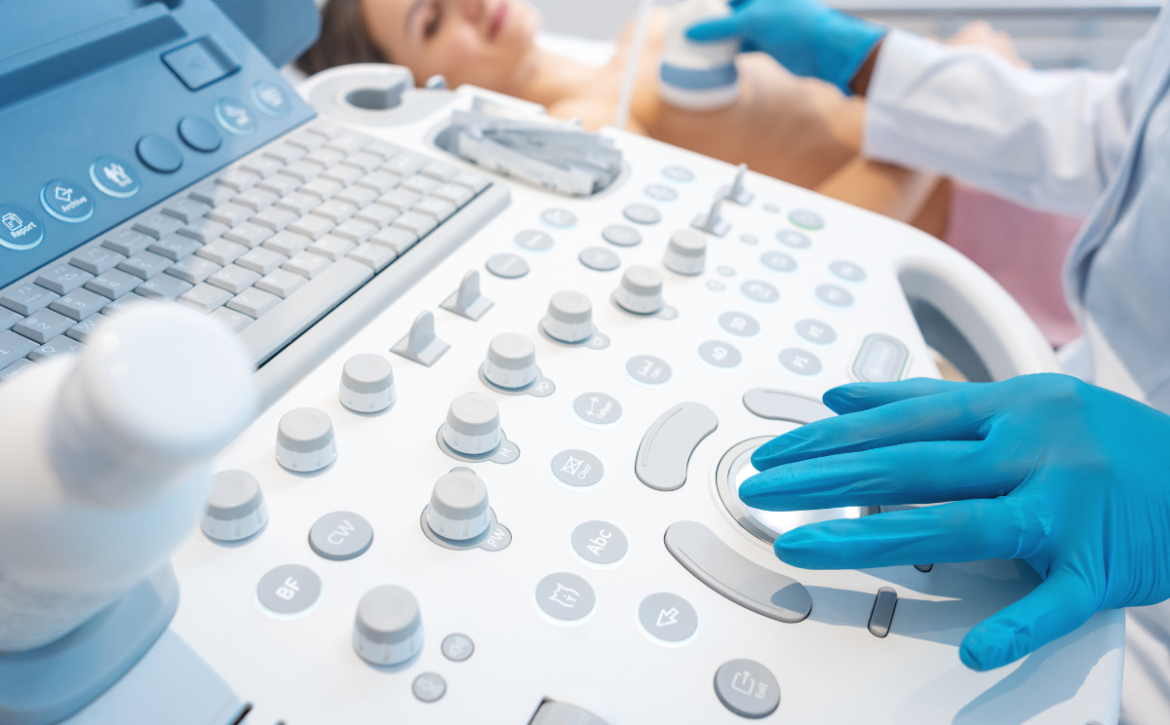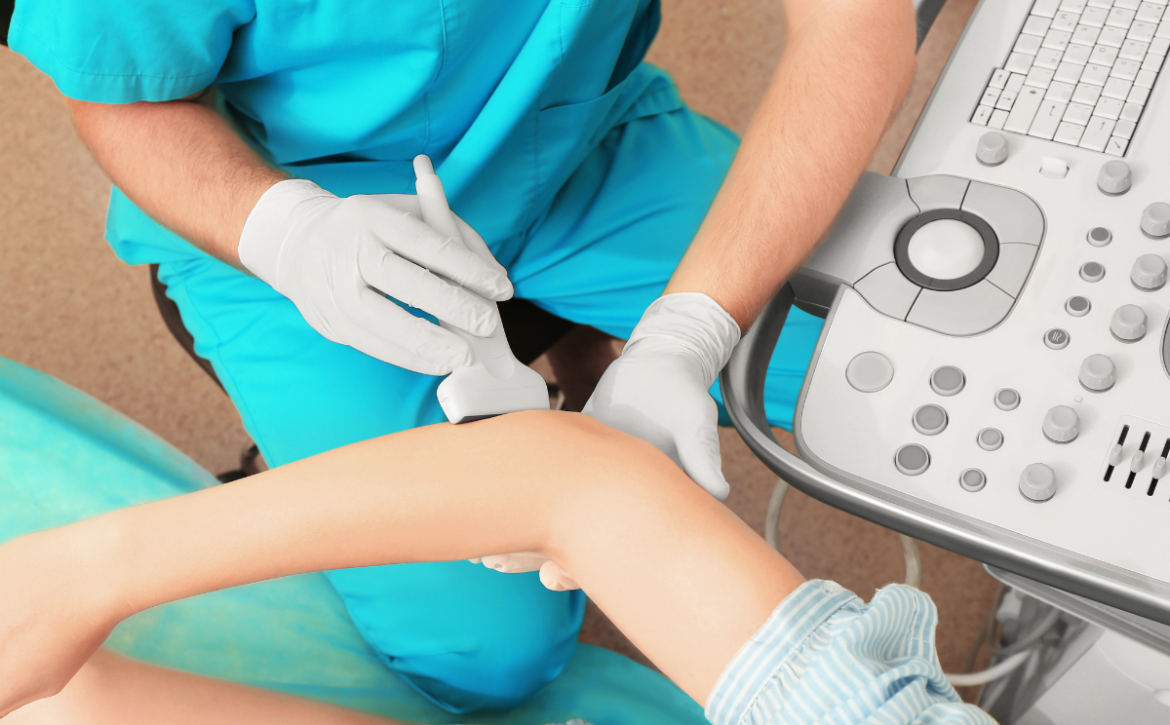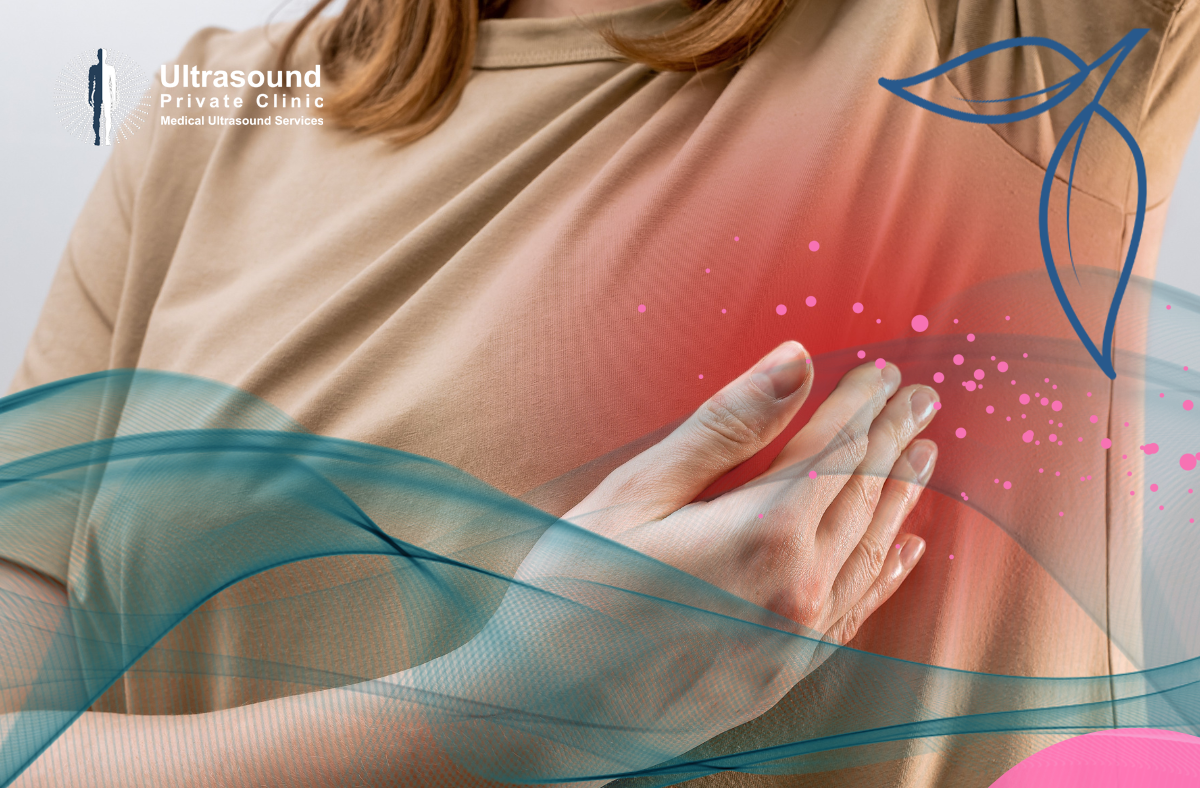Ultrasonography has impaled through various medical specialities as a multipurpose imaging tool for assessment and evaluation of superficial and deep structures. It has been introduced to diagnostic side of medicine as a non-invasive and cost effective procedure with absence of the radiation and readiness of use. Within the limb speciality, ultrasonography has been widely used to provide a dynamic imaging which is useful to differentiate full-thickness from partial thickness tendon tears, muscle tears, and tendon and nerve subluxations or dislocations. High resolution ultrasound imaging is rapid, low cost and non-invasive (Khan and Cook, 2003).
Assessing the integrity and function of the tendons, ligaments and muscles are the main usage of the Musculoskeletal. Differentiation of full thickness from partial thickness rotator cuff tears, muscle tears and biceps tendon subluxations are valuable aspects of the dynamic ultrasound. Ultrasound scanning of non-involved joint can aid the clinician to make accurate and better decision.
Quantifying and visualizing of the presence of inflammation, synovitis, and fluid collections such as oedema or haematoma and soft tissue masses are other valuable usage of the musculoskeletal ultrasound (Bude & Rubin 1996; Breidahl et al 1996; Rubin 1994).
Evaluation of primary erosive changes and vascularity detection in synovial proliferation are other ability of ultrasound as a multifunctional useful tool. This valuable modality is also able to assess the inflammatory activity by using colour or power Doppler ultrasound in rheumatic disease of the small joints such as wrist, hand, elbow and shoulder joints.
NORMAL AND PATHOLOGIC U/S APPEARANCE OF THE TENDON
One of the most common usages of musculoskeletal U/S is to assess tendons’ integrity. Applying parallel and fine fibrillar patterns and assess from the longitudinal view, 3–5 Tendons are recognizable. Hyperechoic lines are being produced by the parallel fascicles of collagen fibers, which exhibit remarkably different from anechoic lines produced by the interfascicular ground substance produces (Martinoli C et al. 1993)
Approaching from a transverse view would indicate round or oval hyperechoic structure of tendons. An example of the above explanation is Anisotropy which is a distinguishing appearance of U/S images of tendons and ligaments. In Anisotropy echogenicity of the structure would appear altered influenced by the angle of the U/S beam as with a vertical beam the image would be hyperechoic and hypoechoic when the beam is oblique. (Lee and Healy, 2004)
The degree of tendon injury and mechanism of that can be evaluated by ultrasound through passive or resisted dynamic examination. Using ultrasound the tendon degeneration is visualized as irregularities of fibrillar appearance, such as thickening and fragmentation, focal hypoechoic areas, and calcifications (Van Holsbeeck and Introcaso, 2001) (Fornage and Rifkin, 1998) (Connell et al., 2001).
Widening of the tendon sheath, loss of normal fibrillar echotexture, and loss of definition of tendon margins are specific character to define the tendon with synovial sheath, but in tendons without synovial sheath, general appearance of the pathology is well defined by focal or diffused tendon thickness, with absent of fibrillar echotexture and areas of hypoechogenicity.Retraction of torn edges, with hypoechoic hematoma or granulation tissue, is the symptom of complete tears of the tendon (Kainberger, et al., 1990). The most useful manure to assess a suspected tendon tear is applying passive movement in order to accentuate the tendon interruption (Bianchi, Zwass, Abdelwahab and Banderali, 1994). In ultrasound imaging collected fluid is visible in the space between the retracted ends of the tendon (Bianchi, Zwass, Abdelwahab and Zoccola, 1994). The common ultrasound appearance of the partial thickness tears present with intact and retracted ruptured portions of the tendon alongside with hematoma (Jacobson, van Holsbeeck, 1998).
Examination of the Shoulder: Ultrasound is one of the most practical modality to evaluate the Rotator cuff disease. Matsen et al. (2006) have introduced musculoskeletal ultrasound as a main imaging technique in assessment of soft tissue injuries of the shoulder. The capability of the ultrasound to conduct dynamic examination and side to side comparison assessment is the most important advantage of this safe method.A successful examination of the rotator cuff is highly dependent on good understanding of the anatomy. The supraspinatus, subscapularis, infraspinatus, trees minor and the long head of the biceps are the forming muscles of rotator cuff which provide dynamic stability for glenohumeral joint. The other important factor to achieve a successful ultrasound is correct positioning of the patient.
Rotator Cuff Tendons Pathologies:
1. Supraspinatus Tendon Pathologies
In the normal longitudinal ultrasound image of the supraspinatus, it appears as a parrot’s beak structure. The parallel convexity of the subacromial– subdeltoid bursa above and the humeral epiphysis below- is visible on the transverse section of the supraspinatus
A. Supraspinatus Tendinosis
The term “tendinosis” (or “tendinopathy”) is used rather than term “tendonitis” because of the absence of active inflammation in these conditions (Khan and Cook, 2003).Heterogeneous, ill-defined and hypoechoic region in the tendon without the tendon defect present focal tendinosis in the ultrasound.
B. Full-Thickness Supraspinatus Tear
Three main characters to categorize the rotator cuff tears are: the degree of tear, the volume of tendon retraction in the longitudinal plane, and the width of the defect in the transverse plane. In the ultrasound, the total absence of the suraspinatus tendon and consequently non visualization of the rotator cuff are the symptoms of the full thickness tears (Teefey et al., 2000). The most common ultrasound feature of full-thickness tears of the supraspinatus is the hypoechoic defect, which appears as sharp demarcations from the bursal to the articular surface of the tendon (Deslandes et al., 2008).
C. Partial-Thickness Supraspinatus Tear
Partial thickness tears are hypoechoic areas within or focal at the bursal or focal at the articular end and generally located at the anatomic neck of the Humerus (Van Holsbeeck et al., 1995).Ultrasound imaging is a less sensitive method to distinguish partial tears and severe localized degeneration of the tendon than detecting full thickness tears (Teefey et al., 2000).Hypoechoic areas within the tendon substance accompanied by intact articular and bursal surfaces present the intra substance tears.A hypoechoic defect in the articular surface tear can continue to the articular surface of the tendon (Meyers et al., 2009).In the cases of bursal-surface tears, the hypoechoic defect continues to the bursal surface of the tendon.
2. Infraspinatus and subscapularis tears and tendinosis
Similar to the supraspinatus tendon, tears of the infraspinatus and subscapularis tendons may be partial-thickness or full-thickness tears.
3. Biceps Tendon Pathologies
The long head of the biceps tendon is retained in place within the groove by the transverse humeral ligament and coracohumeral ligaments.Complete discontinuity of the fibrillar pattern of the tendon is the main presentation of a full thickness tear, but hypoechoic defect is the main visible change in the partial thickness or intrasubstance tear of the biceps tendon. Usually tenosynovitis is frequently visible in bicipital tendinosis.The subluxation or dislocation of the tendon out of the groove occurs when the integrity of the transverse humeral ligament is broken which can be in association with supraspinatus or subscapularis tendon tears. Confirmation of subluxation of biceps tendon out of the groove is possible by internal and external rotation of the shoulder, mainly happens with medial rotation. In case of the complete dislocation or torn of the biceps tendon, bicipital groove is empty in the ultrasound images (Kaeley, 2013).
Examination of the Elbow:
Using of the ultrasonography has gradually been increased in the evaluation of the different types of the pathologies and traumas. Musculoskeletal specialists can detect important information about the integrity of muscles, tendons and ligaments as long as Joints effusion, bursitis, ulnar nerve entrapment and intra-articular loose bodies by dynamic study of the tissues around the elbow with ultrasonography (Tran and Chow 2007).The elbow joint is affected by different types of soft –tissue injuries. One of the most common soft –tissue injuries is Tennis elbow or lateral epicondylitis. Chronic repetitive injuries are the main reason of Tennis elbow. The common origin of the wrist and hand extensor tendons is the lateral epicondyle.Tendons of the extensor carpi radialis brevis, extensor digitorum, extensor digiti minimi, and extensor carpi ulnaris are joining together to form the common extensor tendon origin.Thickened and hypoechoic appearance of the common tendon origin is a remarkable sign of the lateral epicondylitis (Lee, Rosas and Craig, 2010). One of the most common ultrasound manifestations of the tendinopathy is the hypoechoic linear cleft within the tendon which demonstrats intrasubstance tears (Finlay, Ferri and Friedman, 2004). Chronic epicondylitis is associated with tendon thickening, calcification, and cortical irregularity, or spur formation of the epicondyle (Cornell et al., 2001).Golfers elbow is the similar tendinopathic changes visible at the medial epicondyle in the common flexor tendons.
Examination of the Forearm, Wrist, and Hand:
These days’ small structures in the wrist and hand can be evaluated easily with a great accuracy due to currenttechnical developments in ultrasound equipment with modifying the probe size and increasing the transducer frequency. Rheumatoid arthritis (RA), tenosynovitis, ligamentous and tendinous injuries, fractures, ganglions and foreign bodies are the most important conditions that are assessable by ultrasound. (Horton 2001)
NORMAL AND PATHOLOGIC U/S APPEARANCE OF THE MUSCLE
The greyscale appearance of a normal muscle ultrasound demonstrates hypoechoic appearance of the muscle with hyperechoic septations. Acute muscle injuries for instance muscle contusions, strains, tears, hematoma and chronic lesions such as fibrous scars can be effectively assessed by ultrasound.In addition, the expected muscle recovery period and muscle serial assessment can be evaluated and predicted by using ultrasound (Kaeley, 2013).The greyscale appearance of muscle ultrasound in acute and blunt injuries illustrates an ill-defined hyperechoic area in the muscle, with associated hypoechoic hematoma.Fibrous scars which appear as a hyperechoic lesion and remain unchanged with muscle contraction can form in recurrent and chronic muscle injuries.
NORMAL AND PATHOLOGIC U/S APPEARANCE OF THE BURSA
Subacromial Bursa
In normal conditions, the subacromial bursa is hardly visible as is located between the deltoid and the rotator cuff. The normal thickness of the bursa is equal or less than 2 mm. Supraspinatus impingement or tears are the causes of swollen in the bursa and are easy to be seen in ultrasound images basis of fluid collection in the subacromial–subdeltoid bursa with active arm elevation.
NORMAL AND PATHOLOGIC U/S APPEARANCE OF THE NERVE
Fascicular pattern in the longitudinal section and a speckled appearance in the transverse section are characteristic for Peripheral nerves in ultrasound, but neuronal fascicles appear hypoechoic with hyperechoic connective stroma (Chiou et al., 2003).
Carpal Tunnel Syndrome
Assessing the clinical features of Carpal Tunnel Syndrome is the initial diagnostic method which would be confirmed by nerve conduction studies.However, increasing in the crosssectional area of the median nerve at the level of the pisiform bone can be visualised in ultrasound as a key point in diagnosis of Carpal tunnel syndrome (Teefey, 2000)Besides, Visualization of other possible pathologies for instance mass lesions and non invasive pattern of this painless procedure are other advantages of ultrasound in the diagnosis of carpal tunnel Syndrome.
OTHER APPLICATIONS OF U/S
Various pathologies in musculoskeletal speciality are being treated by invasive methods under the guiding of ultrasound such as injections into joints, bursas, or tendon sheaths.In addition ultrasound has been recognised as a safe and accurate imaging modality for monitoring the needle position during the musculoskeletal injection procedures.
LIMITATIONS IN DIAGNOSTIC U/S
Operation dependency and lack of uniformity, due to dynamic nature of musculoskeletal examination, are the main limitations for this diagnostic tool.A combination of probe placement and joint movement increase the unlimited versions of image variations. The best example is the assessment of the rotator cuff in shoulder where the correct scanning techniques are the core of accuracy of the ultrasound examinations.Long learning period is necessary for technicians to perform correct diagnostic procedures and interpret the findings.
CONCLUSION
Musculoskeletal ultrasound, as a main diagnostic modality has several benefits such as highly accessibility and portability. Dynamic imaging and side-to-side comparisons are other capacities of it, which allows clinicians to connect anatomic visualization with their patients’ symptoms directly. Operator dependence and the long learning period are the main disadvantages of ultrasonography.Ultrasound is a remarkable and valuable diagnostic tool and can be an extension of physical examination.
References
1) Bianchi S, Zwass A, Abdelwahab IF, Banderali A, 1994: Diagnosis of tears of the quadriceps tendon of the knee: value of sonography. AJR Am J Roentgenol ;162: pp1137–40
2) Bianchi S, Zwass A, Abdelwahab IF, Zoccola C, 1994: Evaluation of tibialis anterior tendon rupture by ultrasonography. J Clin Ultrasound;22: pp 564–6
3) Bouffard JA, Lee SM, Dhanju J, 2000: Ultrasonography of the shoulder. Semin Ultrasound CT MR ;21: pp 164–91
4) Connell D, Burke F, Coombes P, et al, 2001: Sonographic examination of lateral epicondylitis. AJR Am J Roentgenol ; 176: pp 777–82
5) Chiou HJ, Chou YH, Chiou SY, Liu JB, Chang CY., 2003; Peripheral nerve lesions: role of high-resolution US. Radiographics; 23: 1
6) Deslandes M, Guillin R, Cardinal E, Hobden R, Bureau NJ., 2008. The snapping iliopsoas tendon: new mechanisms using dynamic sonography. AJR Am J Roentgenol; 190: pp 576–581.
7) Finlay K, Ferri M, Friedman L., 2004. Ultrasound of the elbow. Skeletal Radiol; 33:63–79
8) Fomage B, Rifkin M, 1998: Ultrasound examination of tendons. Radiol Clin North Am ;26. pp87–107
9) Horton LK, Jacobson JA, Powell A, Fessell DP, Hayes CW., 2001. Sonography and radiography of softtissue foreign bodies. AJR Am J Roentgenol; 176:1155–1159.
10) Jacobson, JA, van Holsbeeck, MT. 1998: Musculoskeletal ultrasonography. Orthop Clin North Am ;29: pp 135–67
11) Kaeley, GS., 2013. Ultrasound Imaging Module ; The Journal of Rheumatology 40(8):1450-1452
12) Kainberger FM, Engel A, Barton P, Huebsch P, Neuhold A, Salomonowitz E, 1990 : Injury of the Achilles tendon: diagnosis with sonography. AJR Am J Roentgenol ;155: pp 1031-6.
13) Khan K, Cook J, 2003: The painful nonruptured tendon: clinical aspects. Clin Sports Med ;22: pp 711–25
14) Lee JC, Healy J, 2004: Sonography of lower limb muscle injury. AJR Am J Roentgenol ;182. pp341–51
15) Lee KS, Rosas HG, Craig JG, 2010 . Musculoskeletal ultrasound: elbow imaging and procedures. Semin Musculoskelet Radiol; 14: pp 449–460.
16) Martinoli C, Derchi LE, Pastorino C, Bertolotto M, Silvestri E , 1993. Analysis of echotexture of tendons with US. Radiology 186 : pp 839–43
17) Matsen FA, Arntz CT, Lippitt SB, 2006 : Rotator cuff: imaging techniques, in Rockwood CA, Matsen FA (eds): The Shoulder. Philadelphia, PA, W.B. Saunders Co., pp 789–93
18) Meyers PR, Craig JG, van Holsbeeck M., 2009. Shoulder ultrasound. AJR Am J Roentgenol; 193: 174-177
19) Teefey SA, Hasan SA, Middleton WD, Patel M, Wright RW, Yamaguchi K, 2000: Ultrasonography of the rotator cuff. A comparison of ultrasonographic and arthroscopic findings in one hundred consecutive cases. J Bone Joint Surg Am;82: pp 498–50
20) Teefey SA, Middleton WD, Bauer GS, Hildebolt CF, Yamaguchi K, 2000: Sonographic differences in the appearance of acute and chronic full-thickness rotator cuff tears. J Ultrasound Med;19: pp 377–8
21) Tran N, Chow K., 2007. Ultrasonography of the elbow. Semin Musculoskelet Radiol; 11: pp 105–116
22) Van Holsbeeck M, Introcaso J, 2001: Sonography of tendons, in Bralow L (ed): Musculoskeletal Ultrasound, ed 2. St Louis, MO, Mosby, Inc., pp 77–129
23) Van Holsbeeck MT, Kolowich PA, Eyler WR, et al, 1995: US depiction of partial-thickness tear of the rotator cuff. Radiology ;197: pp 443–6







